Among the domestic gardeners, the plant, called the Ranunculyus or the garden buttercup, is also gaining popularity. This unusual flower in an inclusive form is very similar to a small peony or rose, and in the period of complete flourishing - tender poppies. A feature of the plant is the possibility of its cultivation in the garden and in pots in the premises. Let us dwell on the landing of the Ranuncouleus and the care of it under street disembarkation.
Description of the plant and its varieties
The name "Ranunculyus" is known to be a little, but under it is hiding the most ordinary garden buttercup. Wild varieties with simple, enough small flowers of yellow color can be found almost throughout Russia. Garden varieties are distinguished by a variety of color palette, large, bold inflorescences and gentle aroma.
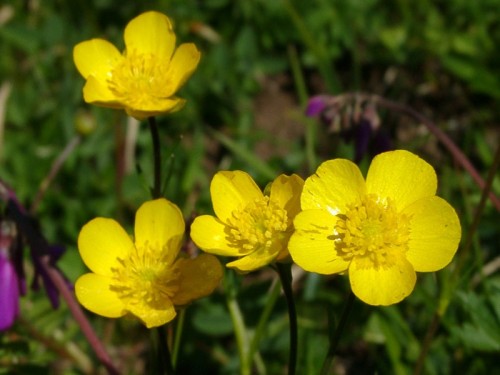
Origin and Features of Ranunculus
Malaya Asia is considered to be the birthplace of the plant, from where in the XVI Art. Flowers were brought to Europe. His name from Latin means a "frog", which is associated with the love of many types of butterms and all amphibian swampy locations. In countries such as Japan, Holland, Argentina, there are whole fields for their cultivation for a further cut.
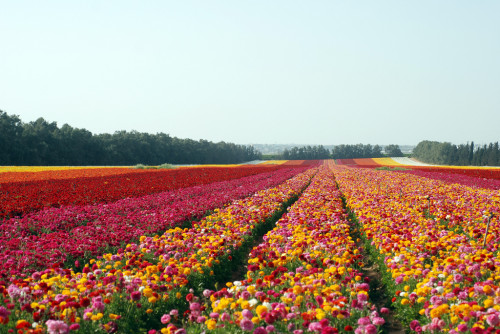
Ranunculyus is a perennial grassy plant with simple, terry, semi-world and densely chip soles, with the exception of blue and blue. The flowering period of the butterfly is starting from May and ending with the last numbers of July. If at this time there will be relatively cold and rainy weather, flowering can last to middle august.
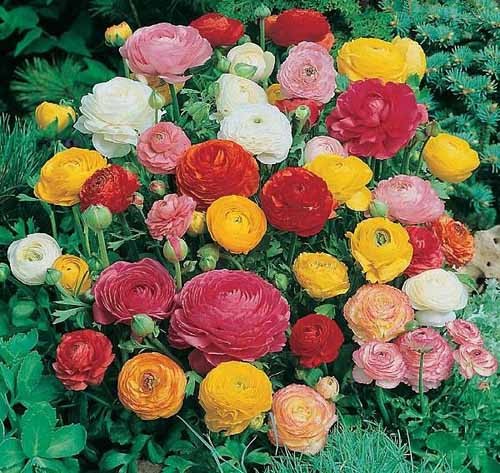
The inflorescence of garden butterflys have a spherical shape and reach in diameter of 8-10 cm. Plant stems are short and durable with deeply dissected leaves, and the greenastic rhizome in shape resembles tubers dahlia. The height of the ranunculus is from 25 to 80 cm, depending on the variety.
It is worth remembering that garden buttercups are poisonous. The juice contains different toxic substances that can lead to severe human poisoning.
Basic groups of gardened butter
Among the Ranunculyuses, 4 main groups of varieties can be distinguished:
- asian;
- french;
- chalmid (African);
- persian.
Asian buttercups reach 40 cm in height, have beautiful simple or terry inflorescences. In shape they are similar to small robes. Color of such plants can be diverse. Most of the modern Ranunculyus hybrids are represented by the Asian Group. These flowers are usually used for cutting.
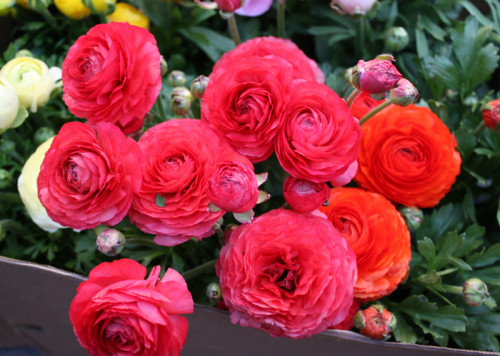
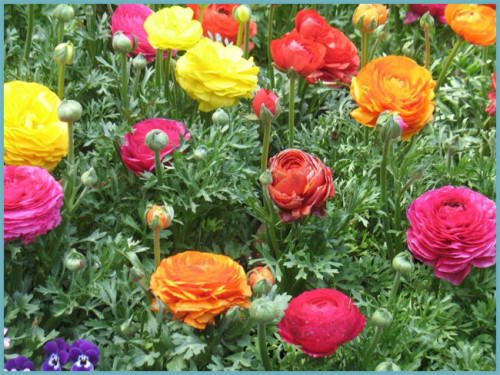
French wounds are brought by breeders in the early XIX century. This is a unique beauty of plants having a wide color palette. A distinctive feature of this group is a spherical form of inflorescences with a huge number of terry or semi-marginal petals and a dark spefy in the middle.
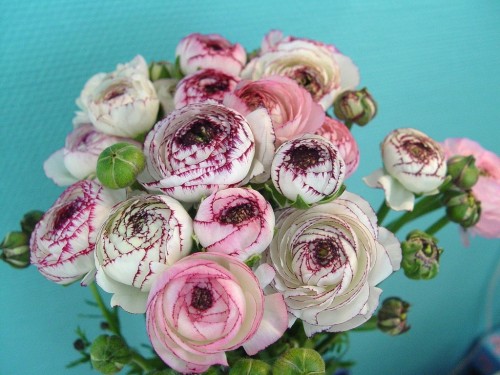
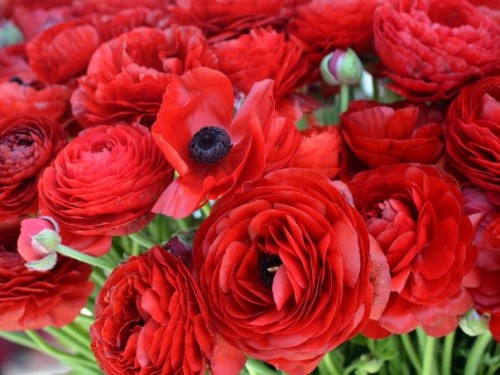
African buttercups or chalmid, have larger leaves than other Ranuncoulyus groups. Their inflorescences are framed by unusual, bent into the petals, which makes them similar to peonies. African buttercups are slightly higher than French, they have terry or semi-art flowers.
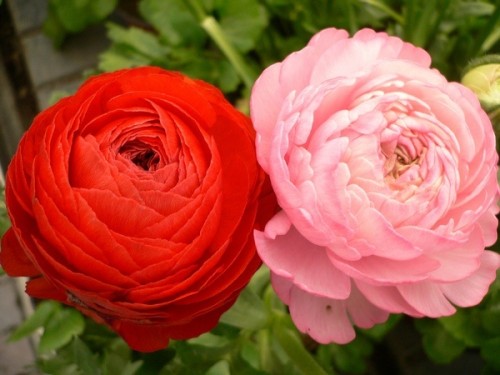
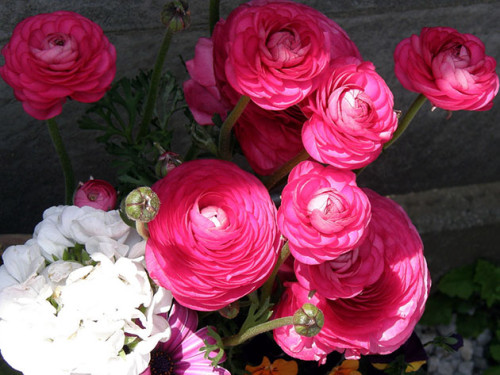
Persian woundings have terry or semi-world inflorescences, resembling "Türbans" form. They are located on high stems and have a different color. This group of varieties is known since the end of the XV century in Holland, is distinguished by very early blossoms.
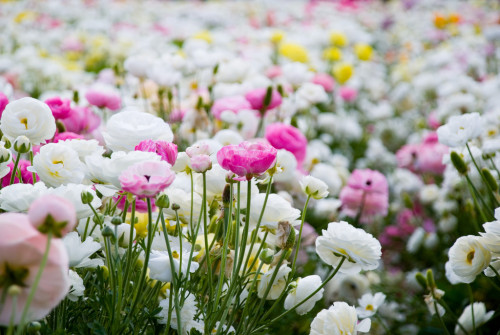
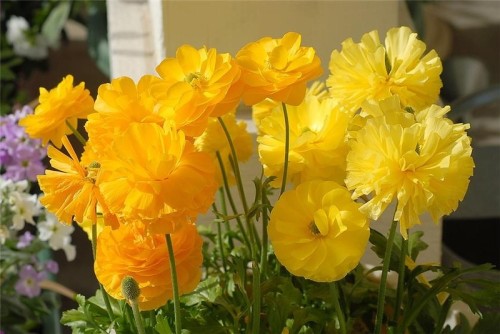
Ranuncoulyus landing in open ground
There are 2 ways to plant garden butterms: using seeds or tubers. The seed technology of growing wounds is usually considered prerogative breeders. And most conventional gardeners resort to the use of tubers.
Choosing a place and soil preparation
Ranuncouleuses can grow under direct sunlight, but they are more like a half. At such areas, the color of the plants will be brighter, and bloom is more than a long time. Buttercipions do not carry drafts, it is better to place them in a warm, well-protected place. Hurry up with landing material is not worth it, it is important to make sure that there is no freezing.
The groundwater is prefers light, fertile, neutral in composition. A mixture of chernozem with humus and sand or neutralized by chalk peat is well suited. But the loams for garden butter is absolutely not suitable.
It is important that the soil absorb water well, but did not delay it for a long time. It should be provided by plants a good drainage to prevent the root system. Sand for this purpose in small quantities, poured on the bottom of the landing pit. Before planting wounds, it is desirable to switch the earth, to fit the compost and treat the Fundazola solution.
Seeding technology
Grow the Ranunculus in the open soil from seeds is a very difficult task, which is associated with their low similarity. In addition, the plants will give the first buds only in a year, and often blooms one by 20 plants. For those who want to get a quick result, this method will be inappropriate.
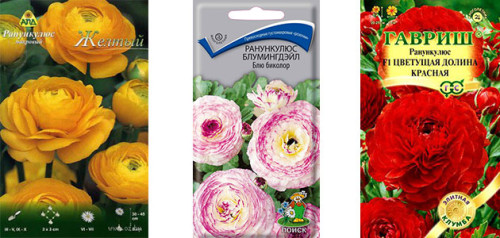
Seeds for gardening butterms can be purchased in specialized stores or assemble independently. The planting material is evinted in the middle of February in spacious boxes / containers with prepared soil. From above, the seeds are neatly sprinkled with a layer of soil about 2 cm and covered with glass or film. Containers are stored in a well-lit room at a temperature of 15-17 ° C. It is important to periodically moisten the land.
The first shoots usually appear in 2-3 weeks. At this time, it is necessary to remove the shelter from the container. After the appearance of 2-3 wound leaves, you need to dive, that is, to send in separate pots. The landing in the open ground is made under the condition of the absence of freezers. Plants can be covered with a small amount of sprinkle material (for example, straw) to protect them from temperature fluctuations.
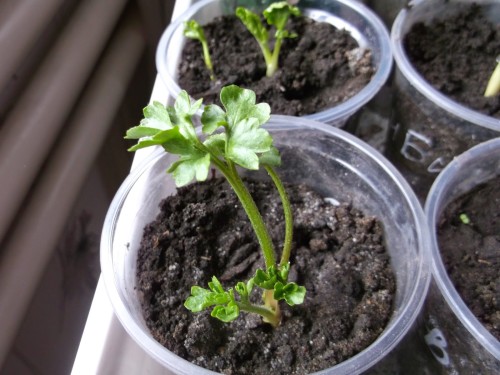
Using clubs for landing
The use of tubers is considered to be the use of tubers in the soil. Landing material can be collected independently or just buy. Tubers on sale usually appear by the end of autumn, but many gardeners are recommended to acquire them in February - March. This is due to the fact that for planting it is necessary to use high-quality material. Its incorrect storage in winter will lead to the unvisability of tubers or germination of the buttercups with a large delay.
If you get the material for planting in the spring, you can protect yourself from buying torn tubers. The plant sprouts about 2 months, so landing is produced in the middle of April, when the likelihood of strong frosts is due. Tubers are pre-prepared: they are soaked in warm water for 2 hours, after which the material is significantly increased in size. You can use a wet sponge to which the purchased tubers are laid on the same period of time.
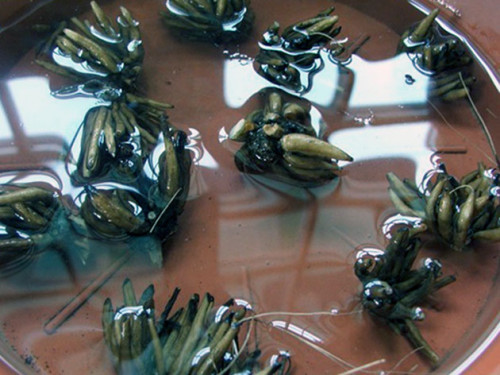
To improve the quality of planting material in water, you can add a growth stimulator and several drops of manganese.
In the prepared ground, recesses are made up to 5 cm, in which the tubers are rooted down. The distance between the plants is left from 10 cm. After landing, the land is desirable to pour, but not much so as not to lead to the pipelight. Flowers with this method appear after 3 months, but good care is important, without which this period can increase significantly.

Basic ways of breeding Ranunculyus
Garden buttercups can be reproduced independently collected seeds. But this will have to tinker. Seeds are collected from chopped flowers using gauze or any other cloth. They are very small, can fall when trying to collect or carry winds. The dried flower turns around with marley / tissue, in which the material is shaken for further landing.
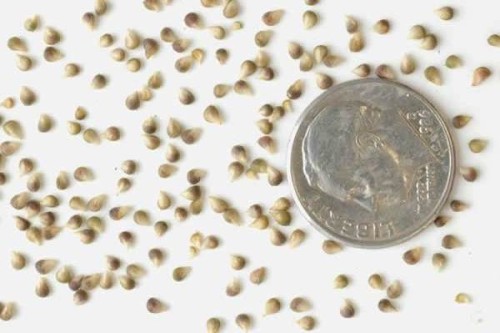
In winter, the seeds are preserved in a dry room when the temperature is met 17-22 ° C, which will ensure the best germination. The planting material is predominantly going from the first blooming flowers.
Ranunculyus is a perennial plant that flows into the hibernation and wakes up only when the temperature is raised over 20 ° C. But the frosts it tolerates badly, so tubers are extracted to ensure normal wintering conditions. It is important to understand when digging the ranunculus and how to care for him so that in the future to multiply by his tubers. In September-October, the nuts of the garden stems are already drying and can cut off. After that, tubers are very careful.
To avoid damage to the rhizomes, it is worth refusing to use the classic bayonet shovel in favor of a small garden or other devices for the safe extract of the root.
Ranuncoules are very demanding to air temperature when digging. It is better to extract the tuber in the afternoon when it exceeds the level of 15 ° C. Before you send the landing material for storage, it must be carefully treated with fungicide for 15-30 minutes.
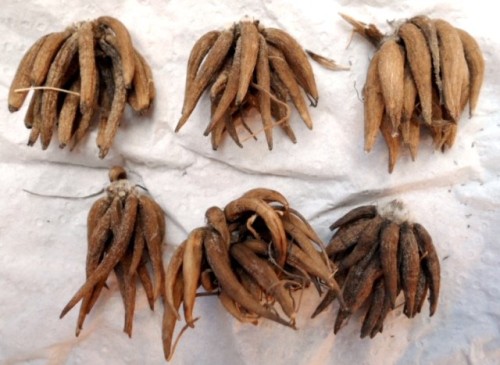
If ducklings are wet dried, they need to dry them in a small greenhouse from the film with mandatory ventilation within 3 days. Next, the rhizomes are wrapped in paper or dry moss and ship into a dark room with good ventilation. To maintain the viability of plants, the temperature regime is necessarily up to 6 ° C and the average humidity. Once a few days, tubers are desirable to turn over to ensure full air circulation.
For regions with warm in winter, when the temperature does not fall below 7-10 ° C, the rhizer can not dig up, but simply cover it with fallen leaves or sweets.
Correct gardening of garden butter
Butterciphes - noncain culture, but to ensure their health and long period of flowering, it is worth adhere to some advice on proper cultivation. Care for wounds should include:
- The correct watering is the root plant of the plant does not carry out excessive moisture and can be rotated. Periodic soil testing is recommended: if it is dry, you can pour flower. Usually the soil moisture frequency is every 3 days. Mustocate the buttercups from the pouring will help a good drainage of pebbles or clay, eliminated on the bottom of the landing pit. Sometimes there are also slices of birch coal. By the end of the flowering period, watering is gradually reduced.
- Control of the state of plants - about the excess of moisture, you can learn from the white raid appeared on the leaf leaves and the crepe of new buds. On excessive dryness of the Earth indicate red spots on the leaves, weakly open and fast-carrying flowers.
- Deleting weeds or severe other plants - it is necessary to prevent damage to the root system and quickly fading the flower.
- Soil looser is carried out once a week, which ensures its permeability and allows air to circulate freely around the root system.
- Removing faded inflorescences - to free up the place for new buds. You can use garden scissors or knife. If you do not delete faded inflorescences, the new will stop appearing, and the leaves will begin to grow. The plant will fully lose its aesthetic appearance.
Timely feeding of plants
After planting the ballots, it is advisable to periodically feed to ensure their full development and long-lasting flowering. During the active growth of leaves under the buttercups, special nitrogen-rich fertilizers contribute, and when the first buds appear - phosphorus-potassium compositions.
Feed the plants preferably every 2 weeks. The required amount of fertilizer is determined on the basis of the landing area: 1 sq. M. Consisted 50 g. It is good to use a peat or diluted compost as feeding.
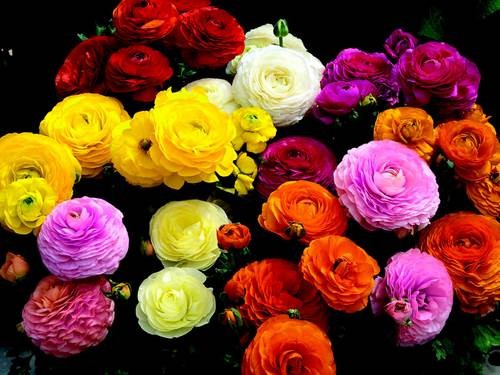
Diseases and pests of the Ranunculyus
Buttercups are characterized by high resistance to pests and various diseases. The tightening rainy season usually leads to the appearance of malical dew, and the leaves can overcome the cabbage. Sometimes the woven, web tick or trips, is justified on the ranhanums. Bioinsecticidal preparations are used to destroy pests.
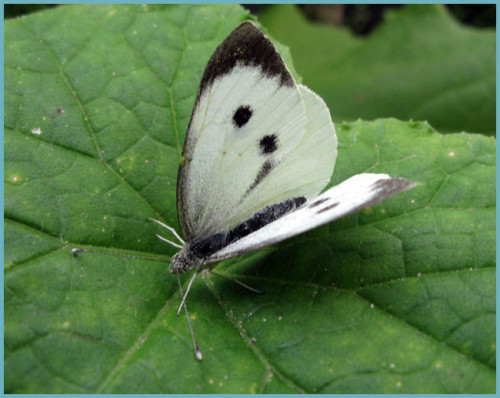
Decorative value and application of nate garden
Ranunculus looks advantageously both in single landings and in combination with other plants. A good neighborhood for them is arabis, creating the necessary shadow and giving a part of the nutrients. Garden buttercups are widely used in decorating, and a special place occupies in the formation of brides bouquets.
Successful Landscape Design Solution
Spectacular landing of the bowls in the garden - group flower beds. One-color patterns or mixtures of plants of different shades are used, which allows you to create a motley live carpet. Ranunculyuses mass plantings create an original and unusual composition on flower beds, rockers, alpine slides. Bright plants are often used to design borders.
Often they are planted into outdoor and suspended pots or patio containers. This decision on the design of the landscape territory is fresh and modern. Alternating Different varieties and butt colors, you can create the most unusual solutions, expand the emphasis, create a bright, distinguished spot.
Stock Foto Ranuncoules in landscape design
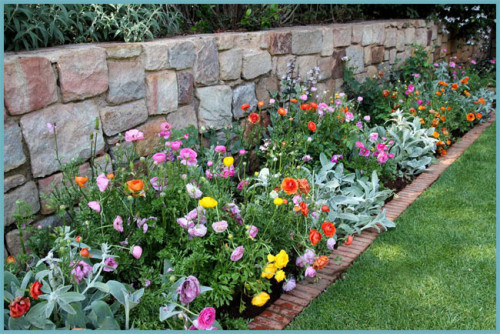
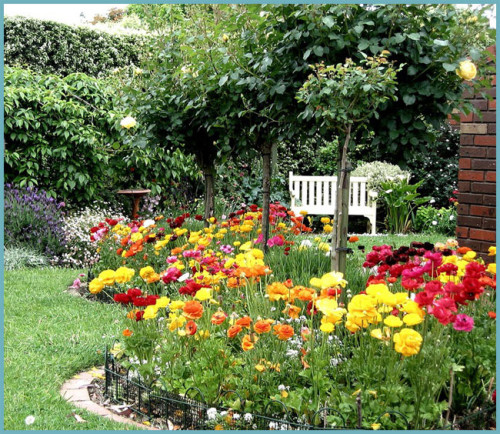
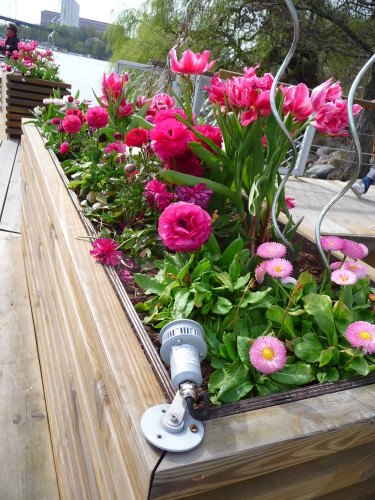
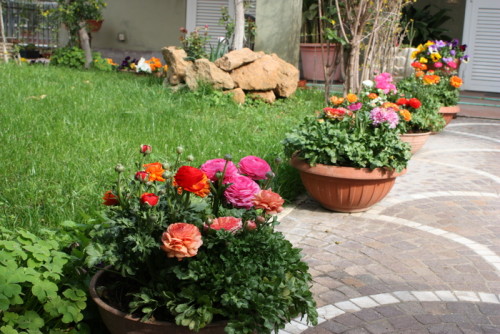
Decoration of events and drawing up bouquets
Garden buttercups are often used when places of celebrations, photographers and decorators. But they pay special attention to the creation of brides bouquets, because such plants reflect purity and tenderness. The finished bouquet looks light, exquisite, emphasizing the thin style of the owner.

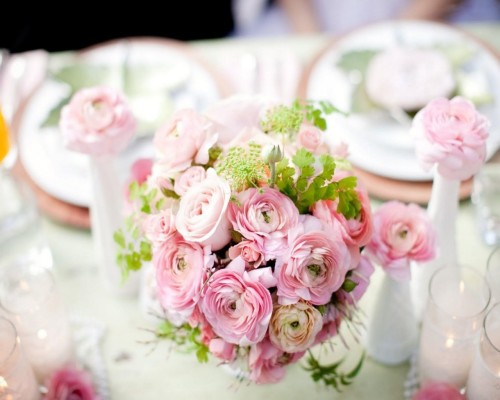
Freckled wounds can stand in water a week, but should avoid drafts and high temperatures. It will undesirable to place them in one vessel with daffodes, it will be destructive for the butter.
Caring for wounds is quite simple and easy, although it has some features. But if you clearly follow them, the plant will reward the successful development and a long-growing bright paint.

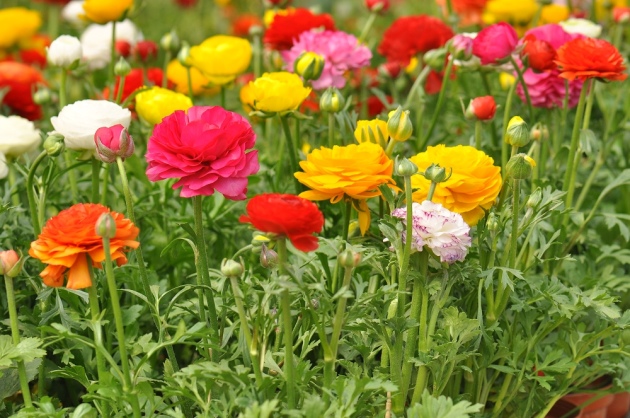












 Start a discussion ...
Start a discussion ...